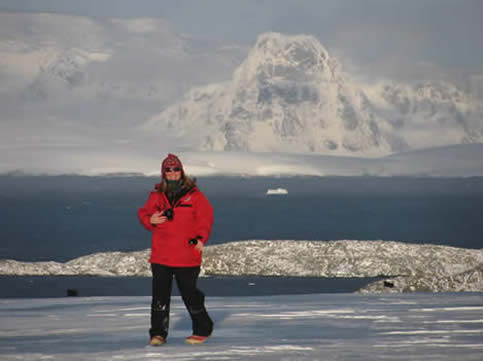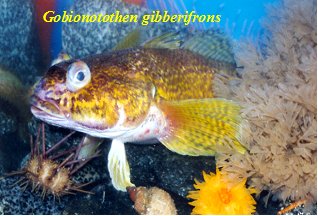Dr. Theresa J. Grove
Education
Ph.D. Marine Biology, 2002
University of Maine
Orono, ME
M.S. Zoology, 1998
University of Maine
Orono, ME
B.A. Biology and Anthropology, 1995
Washington University
St. Louis, MO
Teaching
Introduction to Biology: The Evolution and Diversity of Life (BIOL 1010)Principles of Biology II (BIOL 1108)
Animal Physiology (BIOL 4000)
Research Interests
Note: Due to administrative responsibilities, I am currently not accepting graduate students in my lab.
My research goal is to increase our understanding of the mechanisms responsible for environmental adaptation of fishes to their surrounding environments. By using an integrative approach, information obtained at the cellular, protein, and genomic levels enables me to identify how temperature may direct or influence adaptation of poikilothermic organisms to different thermal regimes. I am most interested in identifying adaptive changes in cardiac and skeletal muscles that fine-tune an organism’s physiology, thus enabling them to be successful in an environment that may be inhospitable to other organisms. Currently, the two systems I study are the cold stenothermal notothenioids found in the Southern Ocean surrounding Antarctica, and temperate killifish (Fundulus sp.) that live in diverse habitats along the eastern coasts of North America.
Publications
O'Brien KM, Rix AS, Grove TJ, Sarrimanolis J, Brooking A, Roberts M, Crockett EL. (2020) Characterization of the hypoxia-inducible factor-1 pathway in hearts of Antarctic notothenioid fishes. Comp. Biochem. Physiol. Part B. 250: 110505. https://doi.org/10.1016/j.cbpb.2020.110505
Rix, A.S., T.J. Grove, K.M. O’Brien. (2017) Hypoxia-Inducible Factor-1α in Antarctic notothenioids contains a polyglutamine and glutamic acid insert that varies in length with phylogeny. Polar Biology. (Advance online publication https://doi.org/10.1007/s00300-017-2164-6)
Keenan, K.A., T.J. Grove, C.A. Oldham, K.M. O’Brien. (2017) Characterization of mitochondrial glycerol-3-phosphate acyltransferase in notothenioid fishes. Comparative Biochemistry and Physiology, Part B. 204: 9-26.
Lewis, J.M., T.J. Grove, K.M. O’Brien. (2015) Energetic costs of protein synthesis do not differ between red- and white-blooded notothenioids. Comparative Biochemistry and Physiology, Part A. 187: 177-183.
Whittington, A.C., **T.E. Nienow, **C.L. Whittington, T.J. Fort, T.J. Grove. (2012) Functional and structural characterization of a eurytolerant calsequestrin from the intertidal teleost Fundulus heteroclitus, PLoS ONE. 7(11): e50801. doi:10.1371/journal.pone.0050801
Shiver, N.B., T.J. Grove. (2011) Hematocrit and hemoglobin determination in the mangrove killifish, Kryptolebias marmoratus. Georgia Journal of Science. 69: 123-130.
Grove, T.J., L.A. McFadden, P.B. Chase and T.S. Moerland. (2005) Effects of temperature, ionic strength and pH on the function of myosin from a eurythermal fish, Fundulus heteroclitus. Journal of Muscle Research and Cell Molity. 26: 191-197.
Grove, T.J., K.A. Puckett, N.M. Brunet, G. Mihajlovic, L.A. McFadden, P. Xiong, S. von Molnar, T.S. Moerland and P.B. Chase. (2005) Packaging actomyosin-based biomolecular motor-driven devices for nano-actuator applications. IEEE Transactions on Advanced Packaging. 28: 556-563.
Grove, T.J. and T.S. Moerland. (2005) Sequencing and over expression of troponin C, troponin T and troponin I from cardiac muscle of a eurythermal teleost Fundulus heteroclitus.FASEB Journal. 19: A559 (abstract)
Grove, T.J. and B.D. Sidell. (2004) Fatty acyl CoA synthetase from Antarctic notothenioid fishes may influence substrate specificity of fat oxidation. Comparative Biochemistry and Physiology B. 139: 53-63.
Grove, T.J., J.W. Hendrickson and B.D. Sidell. (2004) Two species of Antarctic icefishes (genus Champsocephalus) share a common genetic lesion leading to the loss of myoglobin expression. Polar Biology. 27: 579-585.
Grove, T.J. and B.D. Sidell. (2002) Myoglobin deficiency in the hearts of phylogenetically diverse temperate-zone fish species. Canadian Journal of Zoology. 80: 893-901.
College of Science & Mathematics
- 1036 Hugh C. Bailey Science Center
-
Mailing Address
1500 N. Patterson St.
Valdosta, GA 31698 - Phone: 229.333.5699

